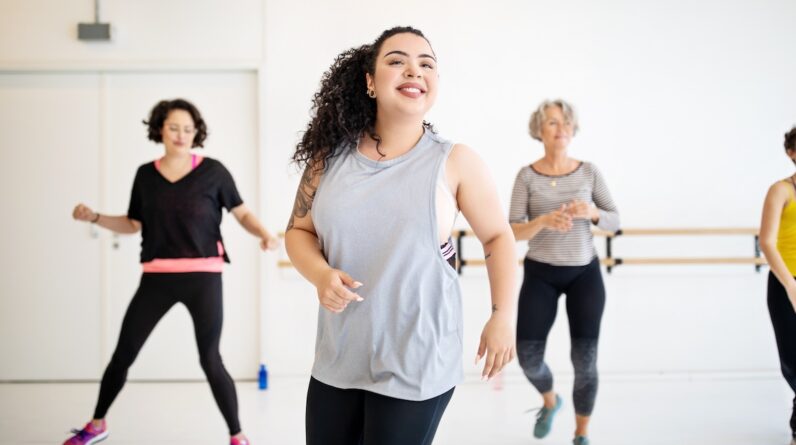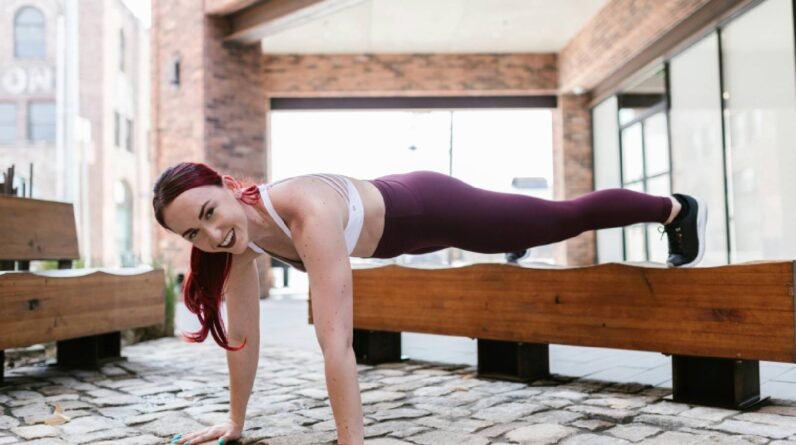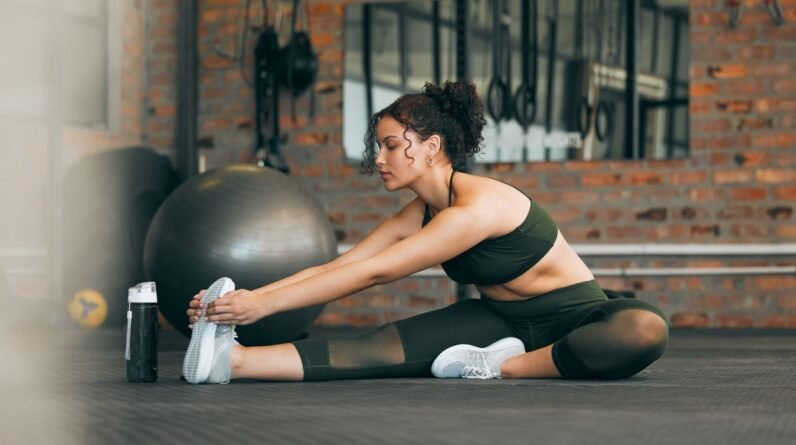
When it comes to aging well, exercise is frequently touted for its breadth of advantages, including maintaining healthy heart function, keeping your metabolism on track, and boosting flexibility and strength for better mobility. But there’s another big benefit to add to that list: brain health.
According to the Centers for Disease Control and Prevention (CDC), regular exercise can not only lower your risk of dementia, it may also regulate brain function such as emotional balance, problem solving, learning, organization, and memory.
In fact, a 2020 study in Preventive Medicine1 found the risk of cognitive decline is doubled among those who are inactive compared to people who get regular physical activity.
There are several potential reasons for the robust connection between a sharp mind and a fit body. A notable one is that when your cardiovascular system is operating well, it supports your brain with better blood flow and oxygen, as well as reduced inflammation and regulated stress hormones, says Karishma Patwa, MD, a cardiologist at Manhattan Cardiology in New York City.
“There are even structural changes in the brain due to physical activity,” she says. “That includes increased thickness of the cortex, new neural connections, and strengthened white matter and hippocampus.” All of those add up to protecting you from age-related concerns that might come up if you’re more sedentary, she adds.
More good news: Any type of activity is helpful, even if that means walking your dog regularly or doing tasks like gardening. However, embarking on a more structured approach can be helpful for progressing your workouts, which can keep your brain benefits going strong.
Here are the four best exercises for brain health that have been researched specifically for their contributions to brain function.
In This Article
-
01
Best Exercises
-
02
Tips for Getting Started
1. High-intensity interval training (HIIT)
While taking on a steady-state activity like bicycling or running certainly brings benefits, it can also be helpful for your brain to change the intensity of how hard you work during an exercise session.
For example, a 2020 review in the Journal of Science and Medicine in Sport looking at brain activity during both HIIT-style workouts and low-intensity exercise found that both types created improvements in brain function. However, HIIT seemed to come with extra advantages because it regulated the release of cortisol, the hormone associated with your stress response.
This is important because cortisol does a ton of work in your body, including playing a role in immunity, anti-inflammation actions, blood pressure, metabolism, and blood glucose levels, per a small 2019 study in Medicine—which all affect brain health, Dr. Patwa says. That means if you can improve regulation of the hormone through an exercise like HIIT, it can have a ripple effect on brain function.
2. Strength training
Stronger muscles, better brain health? Research backs that up: A 2022 meta-analysis in Frontiers in Psychology looking at older adults and strength training found that those who did these types of workouts at least twice per week saw considerable cognitive benefits. Those included improved cerebral blood flow and better hormone regulation.
The researchers added that this type of training also increases both muscle mass and strength, which are seriously important as we age, because muscle weakness can affect mobility and even metabolic health.
It doesn’t take years of training to see an effect, either. A small 2023 study in GeroScience found that older adults who did resistance training for just 12 weeks saw changes in their brain function that would be likely to help prevent cognitive decline as they got older.
3. Yoga
Often touted for improving flexibility and range of motion, one of the best exercises for brain health is yoga, due to its emphasis on mindfulness and breath work can improve your brain function as well.
For example, a 2019 review in Brain Plasticity reviewed studies on the way yoga emphasizes rhythmic breathing, meditation, and focused attention and found that these can increase cerebral blood flow and brain structure.
And a small 2018 study in Frontiers in Human Neuroscience found that even with a short-term practice, yoga can improve emotional reactivity, which can help reduce stress and lower depressive symptoms.
Here’s how to start a yoga practice you’ll actually stick with.
4. Dancing
Perhaps one of the easiest starting points for using movement to affect brain health is to put on a favorite song and just start moving. A 2021 review in Frontiers in Human Neuroscience suggests dance involves neurological processes in seven different parts of the brain, including those associated with emotions, information processing, sensory input, cognitive function, and creativity. (Check out more benefits of dancing beyond brain health!)
The evidence is so strong that the CDC recommends you “dance your way to better brain health,” because it can help with memory, attention, and focus as you get older.
Not a fan of dancing? Then try anything that feels social while you’re active. For instance, a small 2021 study in Frontiers in Psychiatry looked at the effects of an exercise program on people undergoing treatment for depression. The sessions combined endurance, strength, and coordination, but the main focus was on social cooperation and playfulness, rather than skill building.
All participants had brain scans before and after the study timeframe to assess changes in the brain’s ability to organize information and form new connections. After a few weeks of fun-based, group exercise, participants showed significant improvement in brain function as well as symptoms of depression.
“Don’t underestimate yourself; it can be common for people to become self-limiting as they age, and think they can’t exercise as much because they’re ‘not fit enough.’ Be curious about what your body can do.” —Rocky Snyder, CSCS
Tips for getting started with a fitness routine
If you don’t have experience with fitness or you’ve taken a long break from being active, it can be intimidating or overwhelming to think about how to begin.
Here are some top tips from certified strength and conditioning specialist Rocky Snyder, CSCS, author of strength training guide Return to Center.
- Always listen to your body, during and after any exercise; feeling challenged is important, but that shouldn’t mean pain or extreme discomfort. Exercise should make you feel refreshed rather than depleted, Snyder says.
- Recruit a friend or family member, or join a workout group, such as a running club, which can help you stay motivated.
- Keep trying new activities if you don’t have one you enjoy. If none of the exercise types above seems appealing, continue looking, Snyder recommends. That might lead to pickleball, boxing, paddleboarding, rock climbing, tai chi, water aerobics, or something else that’s completely new to you.
- Don’t underestimate yourself; it can be common for people to become self-limiting as they age, and think they can’t exercise as much because they’re “not fit enough,” Snyder says. Be curious about what your body can do, and you’re likely to be surprised by how quickly you can progress, he notes.
“Most of all, it helps to have a clearly defined goal,” Snyder says. That could be anything from exercising four days per week to running a 5K to lifting a certain amount of weight if you’re doing strength training. Even if better brain health is your larger aim, specific goals give you a better roadmap for gauging your progress.
“It’s great to set several goals, such as short-term ones a few months ahead and long-term goals that might be a couple years in the future,” he says. “This type of focus provides a helpful framework beyond just ‘getting in shape’ or ‘being fit,’ and it keeps you motivated along the way.”
Well+Good articles reference scientific, reliable, recent, robust studies to back up the information we share. You can trust us along your wellness journey.
- Omura JD, Brown DR, McGuire LC, Taylor CA, Fulton JE, Carlson SA. Cross-sectional association between physical activity level and subjective cognitive decline among US adults aged ≥45 years, 2015. Prev Med. 2020 Dec;141:106279. doi: 10.1016/j.ypmed.2020.106279. Epub 2020 Oct 6. PMID: 33035548; PMCID: PMC10941305.
- Mellow ML, Goldsworthy MR, Coussens S, Smith AE. Acute aerobic exercise and neuroplasticity of the motor cortex: A systematic review. J Sci Med Sport. 2020 Apr;23(4):408-414. doi: 10.1016/j.jsams.2019.10.015. Epub 2019 Oct 30. PMID: 31759829.
- Sroykham W, Wongsawat Y. Effects of brain activity, morning salivary cortisol, and emotion regulation on cognitive impairment in elderly people. Medicine (Baltimore). 2019 Jun;98(26):e16114. doi: 10.1097/MD.0000000000016114. PMID: 31261527; PMCID: PMC6616250.
- Esmaeilzadeh S, Kumpulainen S, Pesola AJ. Strength-Cognitive Training: A Systemic Review in Adults and Older Adults, and Guidelines to Promote “Strength Exergaming” Innovations. Front Psychol. 2022 May 27;13:855703. doi: 10.3389/fpsyg.2022.855703. PMID: 35712202; PMCID: PMC9197110.
- Sheoran S, Vints WAJ, Valatkevičienė K, Kušleikienė S, Gleiznienė R, Česnaitienė VJ, Himmelreich U, Levin O, Masiulis N. Strength gains after 12 weeks of resistance training correlate with neurochemical markers of brain health in older adults: a randomized control 1H-MRS study. Geroscience. 2023 Jun;45(3):1837-1855. doi: 10.1007/s11357-023-00732-6. Epub 2023 Jan 26. PMID: 36701005; PMCID: PMC9877502.
- Gothe NP, Khan I, Hayes J, Erlenbach E, Damoiseaux JS. Yoga Effects on Brain Health: A Systematic Review of the Current Literature. Brain Plast. 2019 Dec 26;5(1):105-122. doi: 10.3233/BPL-190084. PMID: 31970064; PMCID: PMC6971819.
- Mocanu E, Mohr C, Pouyan N, Thuillard S, Dan-Glauser ES. Reasons, Years and Frequency of Yoga Practice: Effect on Emotion Response Reactivity. Front Hum Neurosci. 2018 Jul 4;12:264. doi: 10.3389/fnhum.2018.00264. PMID: 30022932; PMCID: PMC6039555.
- Basso JC, Satyal MK, Rugh R. Dance on the Brain: Enhancing Intra- and Inter-Brain Synchrony. Front Hum Neurosci. 2021 Jan 7;14:584312. doi: 10.3389/fnhum.2020.584312. PMID: 33505255; PMCID: PMC7832346.
- Brüchle W, Schwarzer C, Berns C, Scho S, Schneefeld J, Koester D, Schack T, Schneider U, Rosenkranz K. Physical Activity Reduces Clinical Symptoms and Restores Neuroplasticity in Major Depression. Front Psychiatry. 2021 Jun 9;12:660642. doi: 10.3389/fpsyt.2021.660642. PMID: 34177647; PMCID: PMC8219854.






